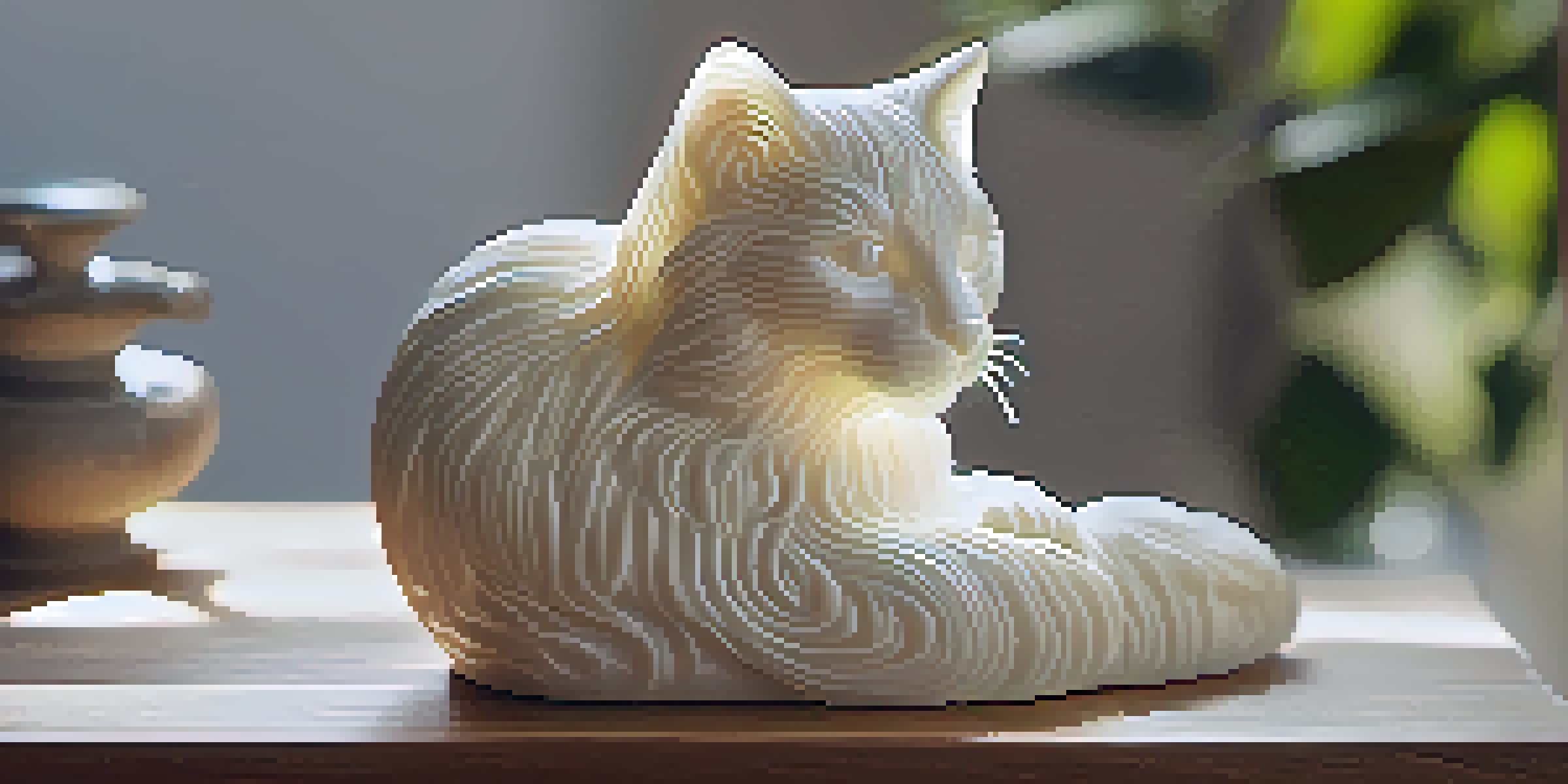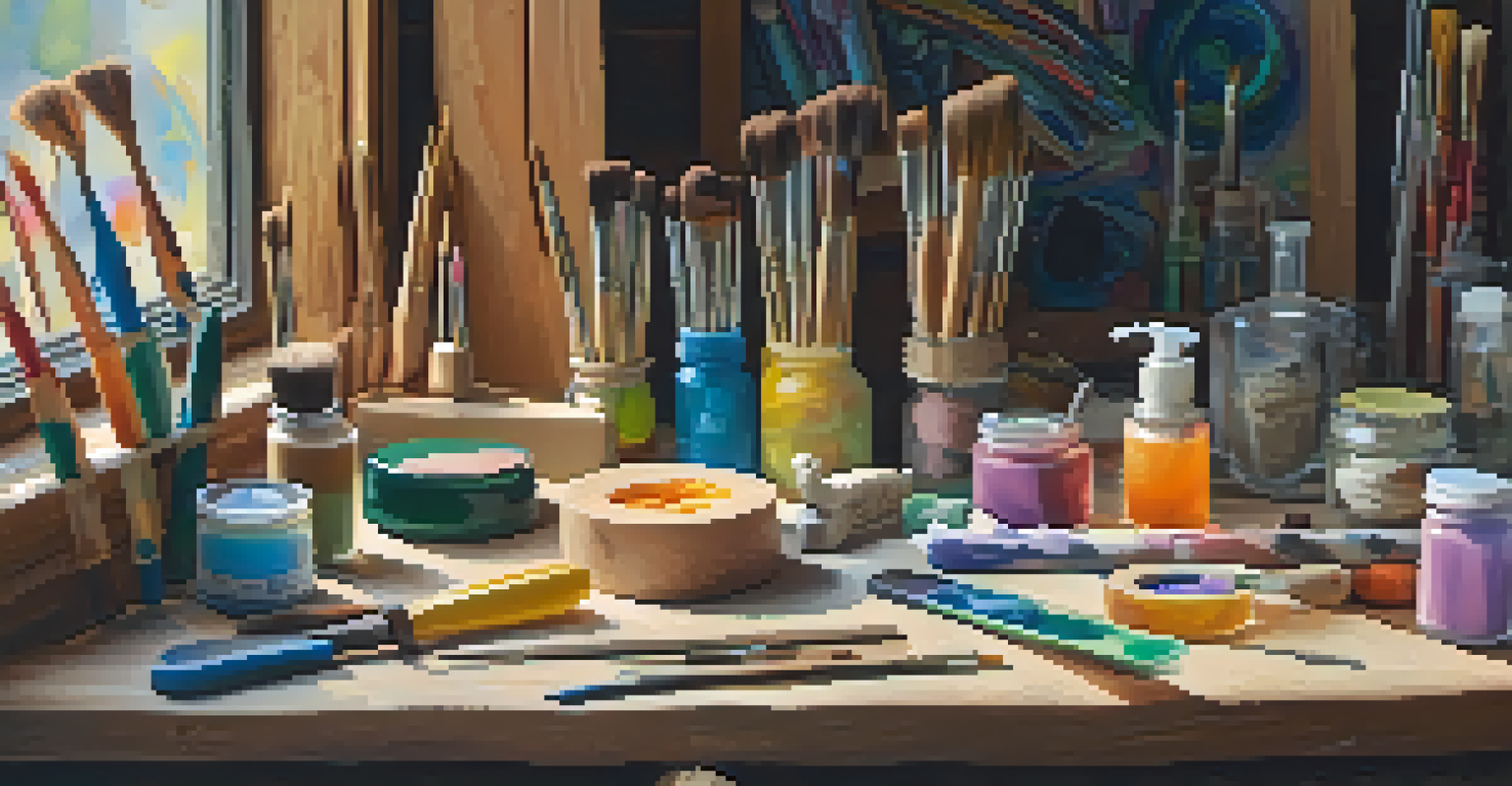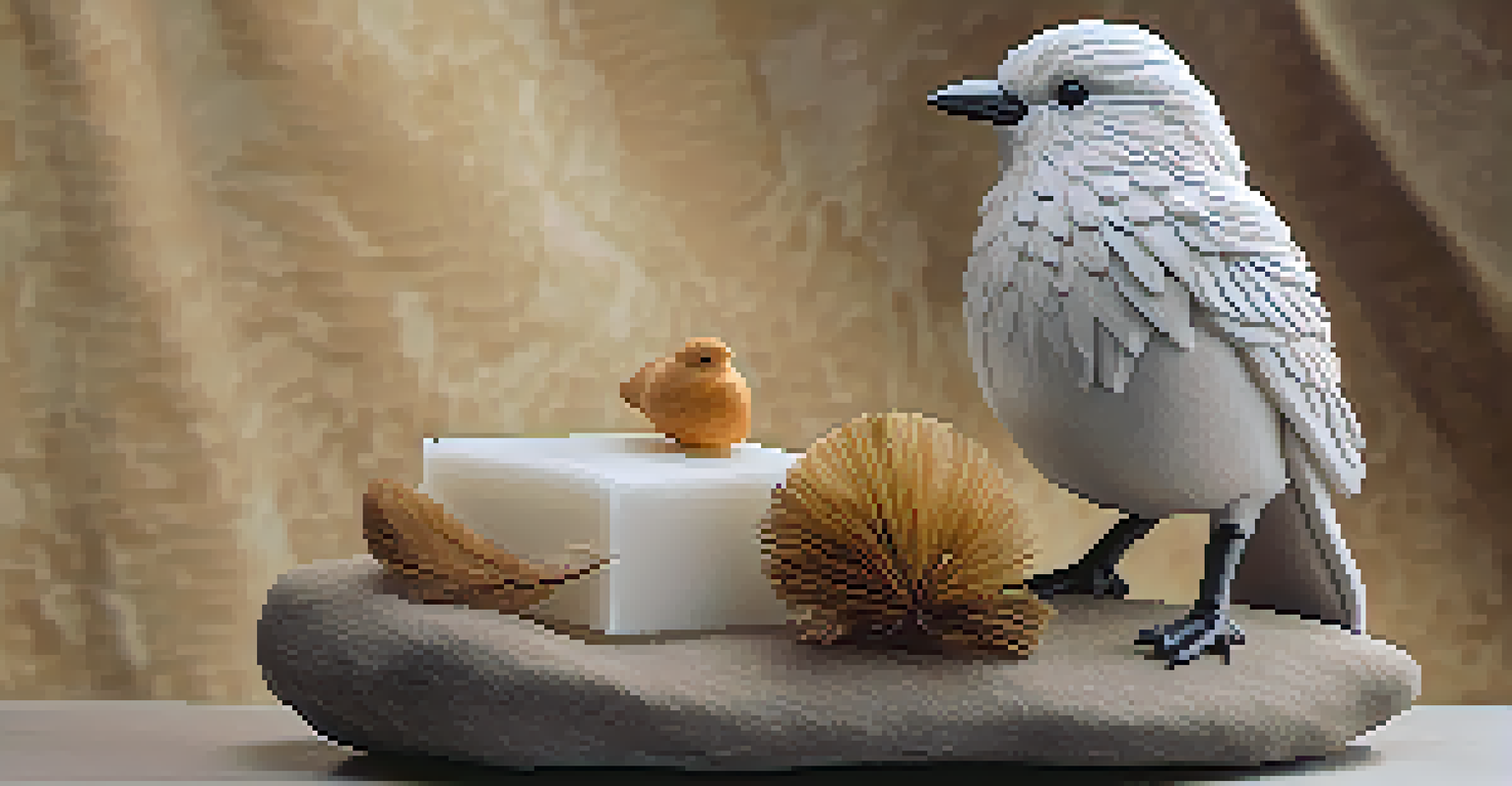Sculpting Realistic Animals: Techniques for Soap Carving

Understanding the Basics of Soap Carving
Soap carving is a delightful art form that transforms simple bars of soap into intricate sculptures. This medium is ideal for beginners because it’s soft, easy to manipulate, and readily available. Plus, the results can be surprisingly detailed, making it a great choice for crafting realistic animals.
Art is not freedom from discipline, but disciplined freedom.
Before diving in, familiarize yourself with the tools of the trade. Essential items include carving knives, chisels, and even basic kitchen tools like peelers. Each tool serves a distinct purpose, so understanding their functions will help you achieve the best results and create lifelike features.
Another important aspect is selecting the right type of soap. While any bar can technically work, softer soaps like glycerin offer more flexibility and make it easier to carve fine details. Choosing the right soap will set the foundation for a successful sculpting journey.
Choosing Your Animal Subject Wisely
When starting your soap carving project, selecting the right animal is crucial. Opt for animals with recognizable features, such as cats, dogs, or birds, as these can be more forgiving for beginners. A simpler subject allows you to focus on mastering the techniques without getting overwhelmed.

Consider the size of your soap bar as well. A larger piece allows for more detail but can also be more challenging. Conversely, a smaller bar might limit your ability to add intricate features, so find a balance that suits your skill level and artistic goals.
Start with the Right Tools
Using quality carving tools and everyday items can significantly enhance your soap carving experience.
Sketching your chosen animal beforehand can also help. Create a simple outline on the soap to guide your carving. This blueprint will keep you on track and ensure that you capture the essence of your subject throughout the sculpting process.
Gathering the Right Tools for Success
Having the appropriate tools can make all the difference in your soap carving journey. A basic set typically includes a carving knife, a fine detail tool, and a smoothing tool. Each of these tools plays a role in shaping, detailing, and finishing your piece, so invest in quality options that feel comfortable in your hands.
Every artist was first an amateur.
Don’t underestimate the power of everyday items as well. Items like toothpicks can assist in creating tiny details, while a spoon can help smooth out surfaces. The beauty of soap carving lies in its accessibility; you don’t need fancy equipment to produce stunning results.
As you gather your tools, keep in mind that practice is key. Experiment with different tools and techniques to discover what works best for you. Over time, you’ll develop a personal style that reflects your unique artistic voice.
Planning Your Carving Process
A well-thought-out plan can streamline your carving process and lead to a more successful outcome. Begin by visualizing the steps you’ll take, from basic shapes to intricate details. Breaking down the carving into manageable phases allows you to stay organized while ensuring that each part gets the attention it deserves.
Consider starting with larger forms before diving into finer details. This way, you can refine the basic structure of your animal before focusing on features like fur or feathers. It’s much easier to adjust proportions at this stage than after you’ve added intricate details.
Choose an Easy Animal Subject
Selecting a recognizable and simpler animal for your first project helps beginners focus on mastering carving techniques.
Lastly, don’t forget to take breaks. Stepping away from your work can provide a fresh perspective and help you spot areas that need adjustment. It’s all part of the creative process and can lead to surprising improvements.
Mastering Basic Techniques for Realism
To achieve realistic animal sculptures, mastering basic techniques is essential. Start with carving simple shapes to form the body structure. This foundational step allows you to create the right proportions and prepares you for adding details later on.
Next, focus on adding texture, which is crucial for realism. Use your detail tool to create fur, scales, or feathers, depending on your chosen animal. Remember, the goal is to mimic nature, so take your time and observe real-life references for inspiration.
Finally, smoothing out surfaces is vital for a polished look. A smoothing tool can help eliminate rough edges and create a more lifelike appearance. This attention to detail can elevate your soap sculpture from basic to breathtaking.
Adding Color and Finishing Touches
Once your carving is complete, it’s time to consider adding color. You can use colored soap, acrylic paints, or even food coloring to enhance your sculpture. Adding color can bring your animal to life, making it more visually appealing and realistic.
When applying paint, consider the animal’s natural colors and patterns. A realistic approach to coloring will significantly enhance the final result. Take your time with this step; layering colors can create depth and dimension, much like in traditional painting.
Plan Your Carving Steps
Breaking down your carving process into manageable phases allows for better organization and attention to detail.
Finally, seal your sculpture to protect it. A clear sealant can help preserve your work and keep it looking fresh over time. This finishing touch not only protects your piece but also gives it a professional sheen.
Troubleshooting Common Carving Challenges
Even the most experienced carvers encounter challenges along the way. One common issue is over-carving, which can lead to loss of detail or even ruin your sculpture. To avoid this, always start with less and gradually remove more material as needed.
Another challenge is achieving balance and proportion. If your animal seems off, step back and assess its overall shape. Sometimes, adjustments to the body or head can correct disproportionate features and bring your sculpture into harmony.

Lastly, don’t get discouraged by mistakes. Every artist faces setbacks, and each mistake is an opportunity to learn. Embracing these challenges can lead to growth and improvement in your carving skills.